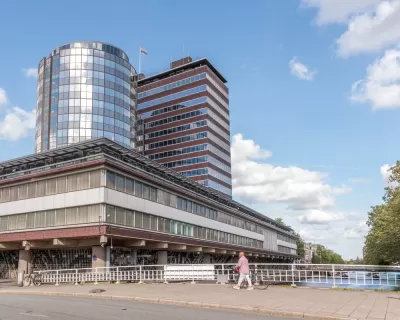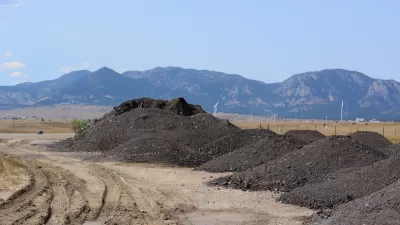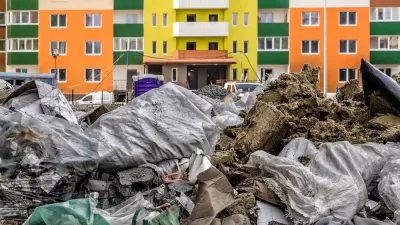The circular economy. Cradle-to-cradle. The regenerative economy. Whatever you call it, an approach to building that eliminates waste would transform the next generation of the built environment.

For as long as they exist, buildings of all sizes and shapes have always required a huge share of resources. Unfortunately buildings don't last forever, so they have always also produced a tremendous amount of waste.
"Typically, the fate of a building that has outlasted its usefulness is demolition, leaving behind a huge pile of waste, writes Jessica Camille Aguirre in a feature article for the New York Times.
With the planet plunging further into an environmental crisis, some designers are pushing for the building industry to adopt the tenants of the circular economy, also known as the regenerative or doughnut economy, as explained by Aguirre: "First, on a planet with limited resources and a rapidly warming climate, it’s crazy to throw stuff away; second, products should be designed with reuse in mind."
The article hinges on the example of a Dutch environmental engineer named Michel Baars, who leads a company disassembling a building known as the cigarette lighter in Amsterdam. The cigarette lighter is easier to disassemble and recycle now, according to the article, because the building was prefabricated and assembled in increments. European examples of the circular economy for building and design are in plentiful supply, but there are also U.S. cities setting policy in front of the curve. "In recent years, concern about waste and the climate has led cities like Portland, Ore., and Milwaukee to pass ordinances requiring certain houses to be deconstructed rather than demolished," reports Aguirre.
More details on the leaders in the cradle-to-cradle design, manufacture, and construction of the built environment, can be read at the source article, below, with numerous examples beyond and related to the work of Mr. Baars. The article also concludes with a survey asking readers to describe their relationship with recycling.
FULL STORY: How to Recycle a 14-Story Office Tower

Trump Administration Could Effectively End Housing Voucher Program
Federal officials are eyeing major cuts to the Section 8 program that helps millions of low-income households pay rent.

Planetizen Federal Action Tracker
A weekly monitor of how Trump’s orders and actions are impacting planners and planning in America.

Canada vs. Kamala: Whose Liberal Housing Platform Comes Out on Top?
As Canada votes for a new Prime Minister, what can America learn from the leading liberal candidate of its neighbor to the north?

Washington State’s Parking Reform Law Could Unlock ‘Countless’ Acres for New Housing
A law that limits how much parking cities can require for residential amd commercial developments could lead to a construction boom.

Wildlife Rebounds After the Eaton Fire
Following the devastation of the Eaton Fire, the return of wildlife and the regrowth of native plants are offering powerful signs of resilience and renewal.

LA to Replace Inglewood Light Rail Project With Bus Shuttles
LA Metro says the change is in response to community engagement and that the new design will be ready before the 2028 Olympic Games.
Urban Design for Planners 1: Software Tools
This six-course series explores essential urban design concepts using open source software and equips planners with the tools they need to participate fully in the urban design process.
Planning for Universal Design
Learn the tools for implementing Universal Design in planning regulations.
Central Transportation Planning Staff/Boston Region MPO
Heyer Gruel & Associates PA
Institute for Housing and Urban Development Studies (IHS)
City of Grandview
Harvard GSD Executive Education
Regional Transportation Commission of Southern Nevada
Toledo-Lucas County Plan Commissions





























